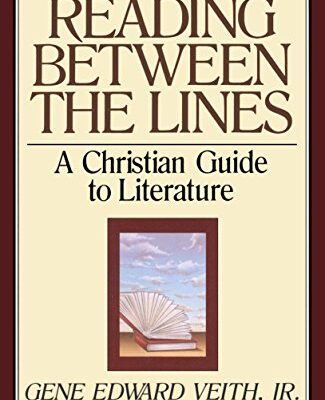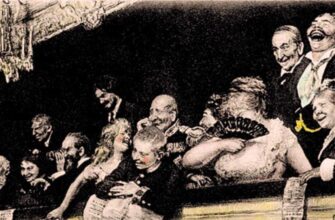In a world increasingly dominated by fleeting digital narratives, there remain timeless tales of strategy, conflict, and intellect. Among them, the ancient game of chess has quietly, yet profoundly, influenced the very fabric of human storytelling. For centuries, authors, poets, and artists have recognized the 64 squares not just as a battlefield for pawns and kings, but as a rich tapestry upon which to weave grander narratives of fate, identity, and the ceaseless human struggle. Now, the World Chess Hall of Fame (WCHOF) in Saint Louis is set to pull back the curtain on this intricate relationship with its ambitious new exhibition: “Reading Between the Lines: Chess & Literature.”
The Unseen Narrative of the Board
It`s an intriguing paradox: a game of strict rules and logical progression, yet one that so effortlessly lends itself to the most imaginative and dramatic literary explorations. Perhaps it`s the inherent symbolism—the king`s vulnerability, the queen`s power, the pawns` relentless march—that resonates deeply with universal themes. Or maybe, it’s the quiet intensity of the struggle, where every move can alter a destiny, mirroring the profound decisions characters face in fiction. As Emily Allred, Curator at WCHOF, eloquently puts it, “Kings and pawns, struggles for power, and tales of transformation – chess has always been more than a game. It is a language for telling human stories.” Indeed, before Netflix discovered Beth Harmon, authors had been using chess for centuries to craft narratives more intricate than any grandmaster`s endgame.
From Wonderland to Psychological Depths
Opening its doors on September 18, 2025, and running through April 12, 2026, “Reading Between the Lines” promises an immersive experience, showcasing rare books, exquisite artwork, historical artifacts, and literary-themed chess sets spanning from the 18th century to the present day. The exhibition meticulously charts how diverse authors have harnessed the game`s metaphorical power:
- Fantasy and Folly: Visitors will encounter the whimsical world of Lewis Carroll’s Through the Looking-Glass, with rare illustrated editions that bring Alice’s chess-inspired adventures to life.
- Psychological Intrigue: The profound mental battles are explored through works like Vladimir Nabokov’s haunting The Defense and Stefan Zweig’s poignant Chess Story, delving into the inner turmoil of players whose lives become inextricably bound to the board.
- Modern Classics and Pop Culture Impact: The exhibition pays homage to Walter Tevis`s monumental The Queen`s Gambit, featuring personal artifacts from the author`s family, including his chess table, a proof copy of the book, and an inscribed edition. It highlights how this story, even decades later, continues to captivate global audiences and inspire new generations of players.
- High Stakes and Epic Battles: Beyond the cerebral, chess has also served as a backdrop for high-octane drama. Scenes from Edgar Rice Burroughs’s pulp classic The Chessmen of Mars, depicted through paintings by J. Allen St. John, remind us that on some boards, the stakes are nothing less than survival.
- Contemporary Voices: The exhibition also ventures into modern literature, showcasing how contemporary writers like N.K. Jemisin (Far Sector) and Kyla Zhao (May the Best Player Win) continue to explore themes of identity, struggle, and connection through the lens of chess in an ever-evolving world.
Beyond the Page: Artifacts That Speak Volumes
What truly distinguishes this exhibition are the personal connections it unearths. Imagine standing before a chess set that once belonged to Henry Ware Eliot, the father of the illustrious T. S. Eliot, passed down through the generations and later inherited by the Saint Louis poet. These cherished artifacts offer a tangible link to the minds that found inspiration in the checkered board, bridging the gap between historical figures and their immortal words. Artists, too, have translated classic stories into the language of chess, with creations like Alessandro Gallo’s Animal Farm, Jessica DeStefano’s Moby-Dick, and Wedgwood Flaxman’s Shakespeare-inspired Macbeth chessmen.
As Curator Allred aptly concludes, “Reading Between the Lines invites visitors to see how stories across time – from medieval sermons to modern science fiction – have used the game to grapple with power, morality, and imagination.” It`s a testament to chess`s enduring power as a cultural mirror.
An Invitation to Explore
The WCHOF is not merely presenting an exhibition; it`s fostering a community experience. Alongside the main display, a dedicated reading area will allow visitors to delve deeper into the literary works featured. A robust schedule of public programs, family activities, and special events promises to connect visitors of all ages with the rich, literary legacy of the world`s most enduring game. Saint Louis, already a prominent hub in the global chess world, once again cements its status as a nexus where culture, intellect, and history beautifully converge.
Grand Opening Celebration: “Reading Between the Lines”
The Saint Louis community and beyond are cordially invited to celebrate the grand opening of “Reading Between the Lines: Chess & Literature” on Thursday, September 18, 2025, from 5 to 8 p.m. This unforgettable evening will feature complimentary admission, convenient valet service, and the esteemed presence of the family of acclaimed author Walter Tevis. Don`t miss this unique opportunity to immerse yourself in the profound connection between chess and storytelling.
To ensure your place at this distinctive cultural event, please RSVP today at [email protected].








